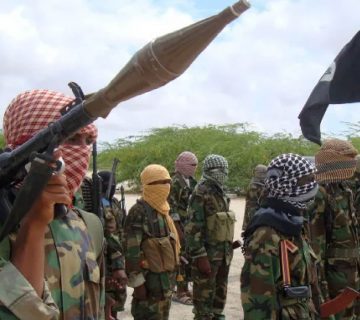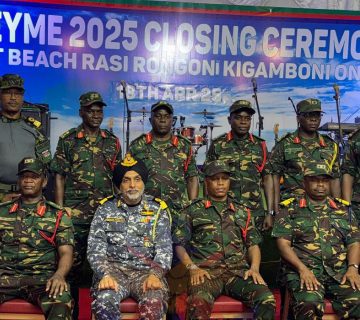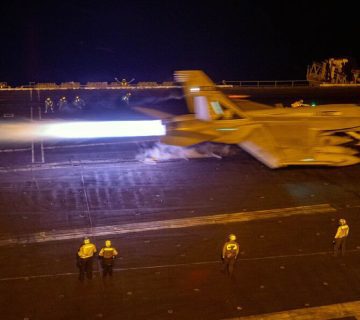The October14, 2017 Mogadishu bombing is the most significant terrorist incident that has occurred in the Horn of Africa yet. The death of at least 300 people, the injury of hundreds, and the scale of destruction to buildings, roads, and other infrastructure, have been attributed to the explosion of twin bombs, in Hodan and Madina districts of Somalia’s capital, Mogadishu. Hodan bore the brunt of the attack.
Media reports indicate that a car loaded with hundreds of kilograms of both home-made and military grade explosives exploded in Hodan at about 4 pm. The explosion happened in a busy area of Mogadishu, by an intersection of a frequently used road. There were fires. Falling debris. Chaos and confusion. The attack sent shock waves in the region, with governments of neighbouring countries heightening security and surveillance within their borders. While witnesses and responders described the incident, and the associated scenes as horrifying, revolting, and shocking, an act of terror like this one was not entirely unexpected.
Weimeng Yeo, a terrorism risk modeller, indicated, at the start of 2017 that terrorist acts will be “more ambitious and sophisticated” this year. In an article titled ‘Four trends in global terrorism threats in 2017,’ Yeo noted that these kinds of attack would target areas of high population density. This Mogadishu incident is not the first time terrorists have detonated more than one bomb almost simultaneously in eastern Africa. In 1998, al Qaida truck-bombed two US embassies, in Nairobi, Kenya’s capital, and in Dar es Salaam (Tanzania’s commercial capital). At least 213 people died, and more than 3,000 were injured in the Nairobi attack. 11 people were killed, and at least 85 people were injured in Dar es Salaam. More people died in Mogadishu blast than the combined number of those who died in Nairobi and Dar es Salaam. The attacker(s) used trucks as contact weapons involving explosives to shore up their legitimacy and credibility. The Mogadishu blast (coming about a decade since the al Shabab insurgency took root in Somalia, and on the back of concerted efforts to curtail the group’s activities in Somalia) seems like a well-done-pat-on-the-back event to mark al Shabab’s 10 anniversary.
To be sure, no one has claimed responsibility yet for the Mogadishu incident. Still, al Shabab, the Somalia-based group affiliated to al Qaida has been blamed, because the attacks bear the hallmarks of al Shabab. Al Shabab tends to delay responsibility claims when there is need to protect its public image. It also tends to bomb civilians, government agents, and State and joint military units, in Somalia. The impact of the blast reportedly damaged the embassies of Qatar and the UK, Safari Hotel (where some locals and foreigners met), and government facilities, among other property. African Union Mission to Somalia (AMISON), a joint peace keeping force, has been helping the Somalia government to secure the country, and rid it of al Shabab.
Exporting Terror
Besides putting on more formidable, fearsome displays this year, Yeo also reckoned terrorists will lose ground in their traditional (home) bases, and “expand attacks abroad.” Not only has al Shabab been blamed for the deaths of scores of Kenyan Defence Forces (KDF) in Somalia, militants associated with this group have injured and/or killed several Kenyans, in Kenya. Some of these were KDF soldiers securing locations such as Boni forest that al Shabab threatens to overrun. Others were government officials. In September 2017, Maryam El Maawy, Principal Secretary, Public Works died of injuries sustained when al Shabab militants attacked her along the Mpeketoni-Lamu Road (Kenya) a couple of months before. Most of the Kenyans attacked in Kenya were civilians. In August 2017, for example, al Shabab beheaded at least 3 civilians in Lamu (Kenya’s Coast).
Beheadings are rare though. The group prefers deadlier methods such as armed assaults. According to the 2017 Global Terrorism Index, this kind of assaults delivers “5.5 deaths per assault,” one average. Explosives, in contrast, are only half as effective as armed assaults, with an estimated “2.6 deaths per assault.”
Holding the Global Terrorism Pulse
Yeo also projected that two jihadi industry peers, al Qaida, and ISIS, will be the main merchants of terror in 2017. Al Shabab has just delivered the deadliest act of terror yet, in Somalia, in the Horn of Africa, and in eastern Africa.
Besides holding the pulse of terror globally, Yeo reckoned competition between the duo will increase this year. It is not yet clear what the impact of this rivalry in the Somalia, Horn of Africa, and eastern Africa, will be. What is clear is that the threat of terrorist attacks in these regions, and in other parts of the world, remains. It is also evident that the onus is on actors in the counter-terrorism space to retake the pulse of global terrorism from merchants of terror.
Almost 20 years since the 1998 twin bombings in Kenya and Tanzania, it may seem that few, if any, lessons have been learnt about countering terrorism. Concerted, collaborative efforts to delegitimize and counter terrorism continuously – by addressing underlying conditions systematically (‘soft’ approach), and using military means (‘hard’ approach) – will prevent another mega, Mogadishu-style attack in the Horn of Africa this year, and in the future.
Roselyne Omondi is a Research Fellow at the HORN Institute



